Do Hamsters Know We Love Them? Exploring the Emotional Intelligence of Our Furry Friends
Hamsters are cute, fluffy, and make great pets. They are small and easy to take care of, making them a popular choice for many people. However, as with any pet, it’s natural to wonder whether or not your hamster knows that you love them. After all, you spend time with them, feed them, and provide them with a comfortable home, but do they understand that this means you care for them?
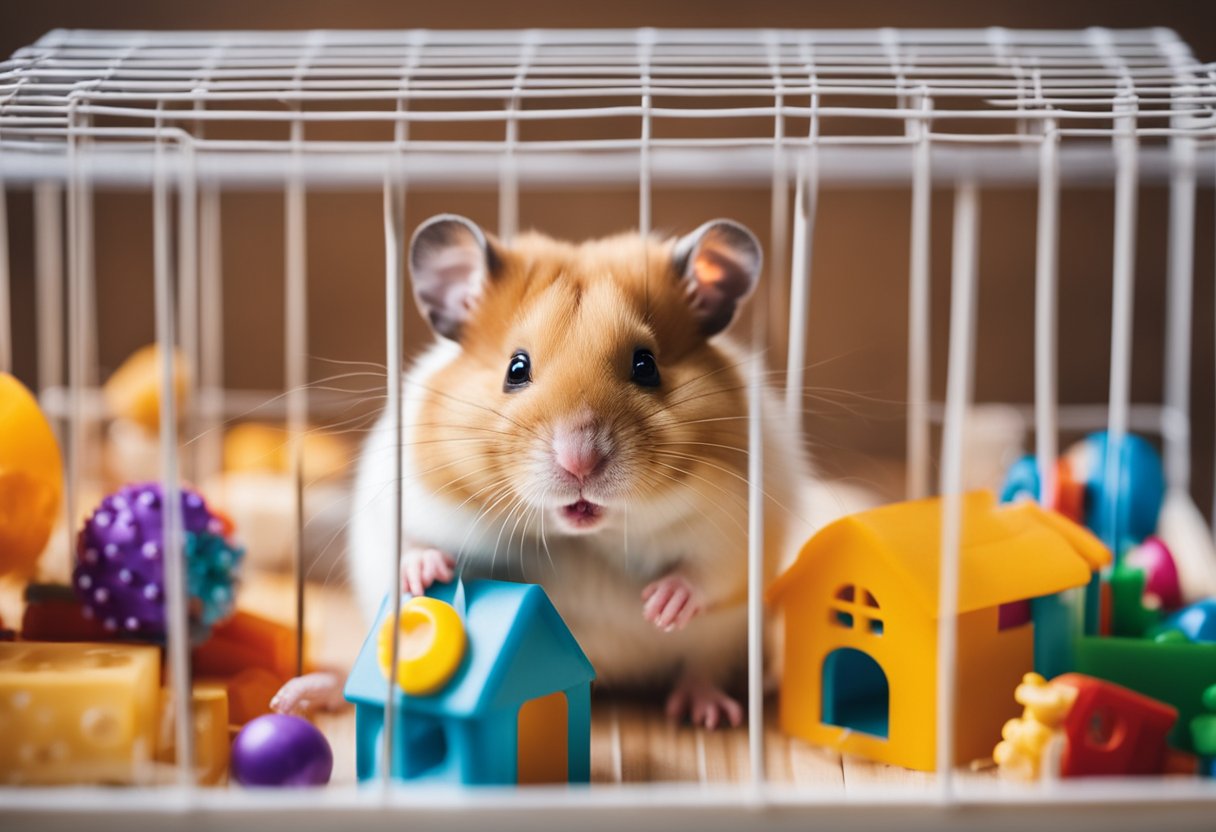
Understanding Hamster Cognition can provide insight into whether or not hamsters can feel love. Although hamsters are intelligent creatures, they have limited cognitive abilities, and it’s unlikely that they can understand the complex emotion of love. However, hamsters can recognize and respond to affection from their owners. They can also develop a bond with their owners, which can be seen in their behavior towards them.
Key Takeaways
- Hamsters may not understand the complex emotion of love, but they can recognize and respond to affection from their owners.
- Hamsters can develop a bond with their owners, which can be seen in their behavior towards them.
- Providing a comfortable home, spending time with your hamster, and showing them affection are ways to express your care for your pet.
Understanding Hamster Cognition
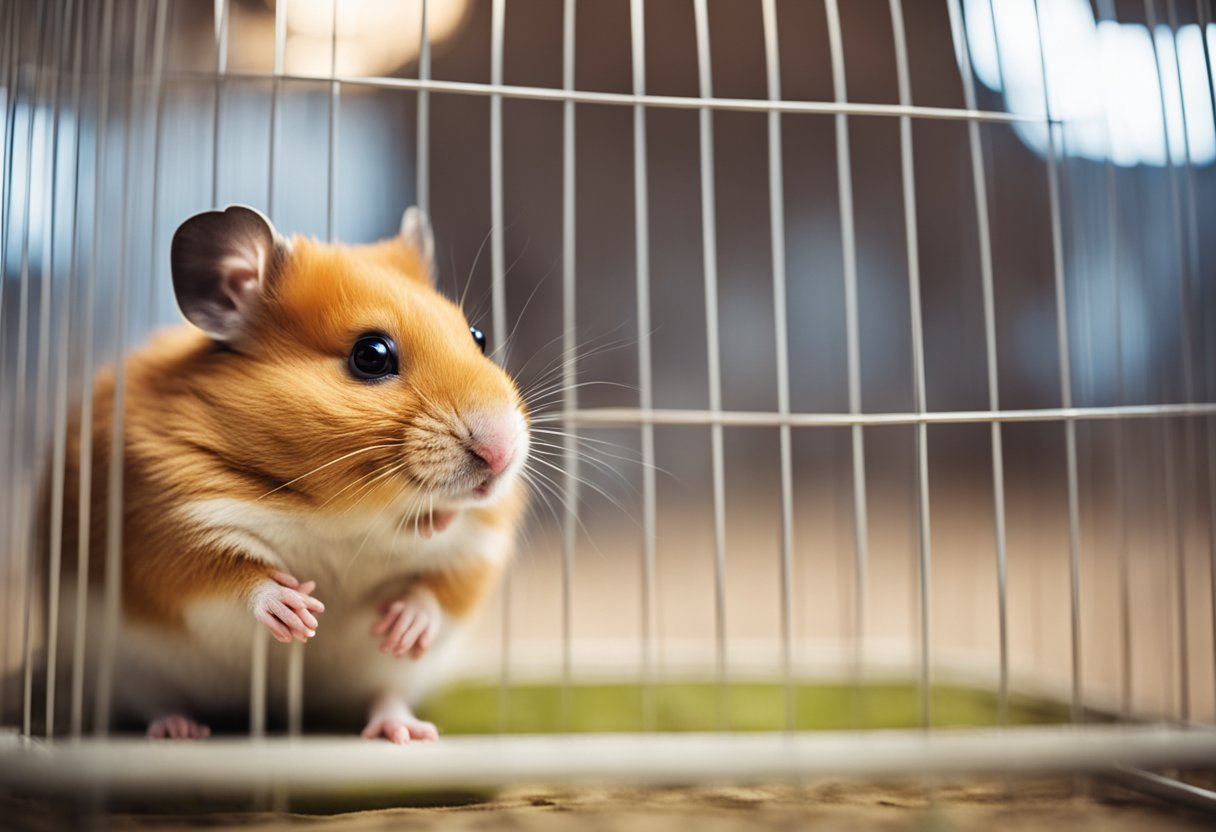
Hamsters are intelligent creatures that have cognitive abilities similar to other pets. Understanding how a hamster’s brain works can help you to better understand their behavior and how they perceive their environment.
Signs of Recognition and Attachment
Hamsters are social animals that can form attachments to their owners. According to Petshun, hamsters can recognize and remember their owners through a combination of scent, sound, and touch. They can also distinguish between familiar and unfamiliar people and animals.
One sign of attachment is when a hamster seeks out your attention and interacts with you. This can include climbing on your hand, coming to the front of the cage when you approach, or even following you around. Another sign is when a hamster becomes distressed or anxious when separated from their owner for extended periods.
Hamster Memory and Association
Hamsters have good memories and can remember past experiences and associations. According to Petkeen, hamsters recognize other hamsters by their scent and physical contact. This means that scent alone isn’t enough for a hamster to recognize another hamster or person; however, they may be associated with other cues, such as sounds and touch.
Hamsters can also develop associations with certain objects or activities. For example, if you always give your hamster a treat after cleaning their cage, they may start to associate the sound of the cage cleaning with receiving a treat. This can be used to your advantage when training your hamster or reinforcing positive behaviors.
Overall, understanding hamster cognition can help you to better communicate with your pet and provide them with the care and attention they need. By recognizing signs of recognition and attachment, and using positive associations, you can strengthen your bond with your hamster and provide them with a happy and healthy life.
Expressing Affection to Hamsters
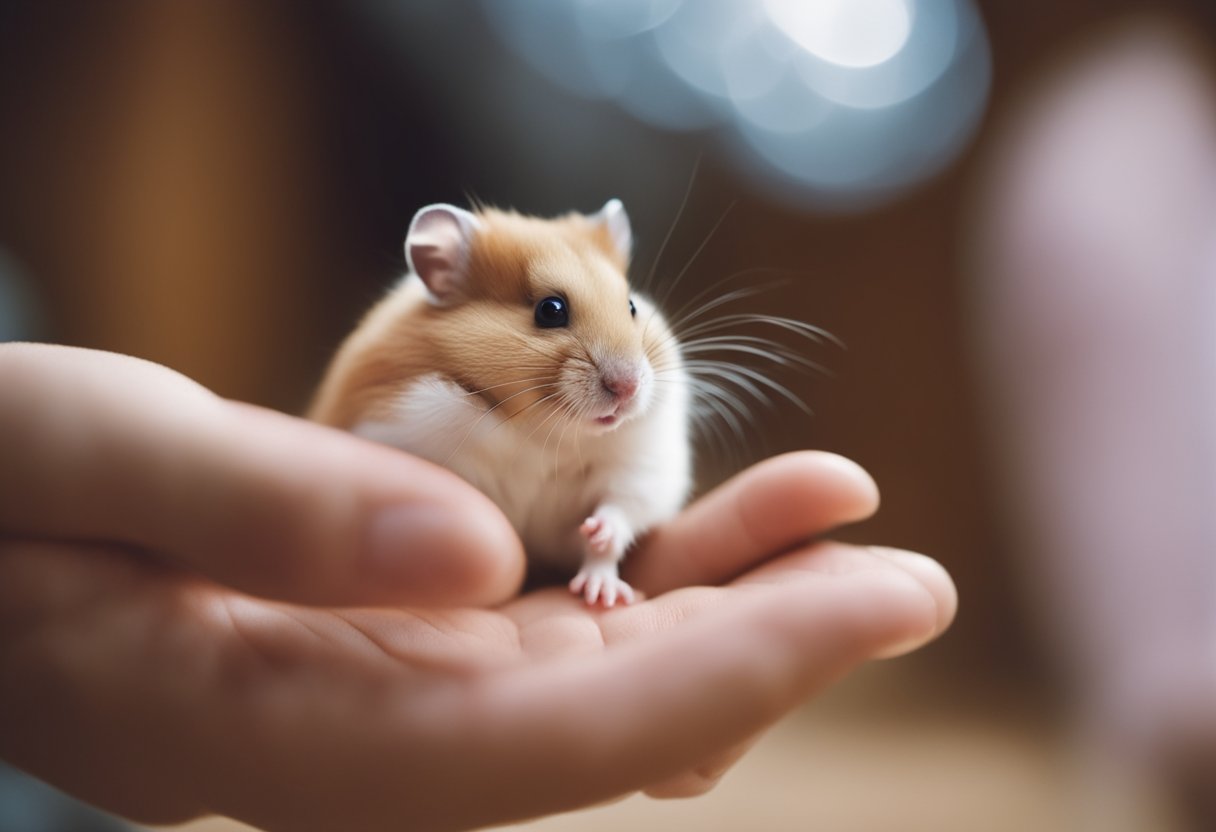
Hamsters are social animals that thrive on interaction and affection. As a pet owner, it is important to show your hamster that you care for them. Here are some ways to express affection to your hamster.
Appropriate Handling and Interaction
When handling your hamster, it is important to do so gently and with care. Hamsters are small and delicate animals, and rough handling can cause injury or stress. Always support your hamster’s body when picking them up and avoid sudden movements.
Interacting with your hamster is also important. Spend time with them every day, talking to them, and playing with them. Hamsters enjoy toys, such as exercise wheels, tunnels, and chew toys. You can also offer treats, such as small pieces of fruits and vegetables, to show your hamster that you care.
Creating a Comfortable Habitat
Hamsters need a comfortable and safe habitat to thrive. Make sure their cage is clean and spacious enough for them to move around. Provide them with bedding material, such as wood shavings or recycled paper, to create a cozy environment.
You can also add hiding places, such as tubes or boxes, to give your hamster a sense of security. Make sure their cage is located in a quiet and low-traffic area of your home to reduce stress.
Feeding and Treats
A healthy diet is essential for your hamster’s well-being. Provide them with a high-quality hamster food that contains a variety of nutrients. You can also offer fresh fruits and vegetables as a treat.
Avoid feeding your hamster sugary or fatty foods, as these can lead to health problems. Always provide fresh water in a water bottle or bowl, and clean it regularly.
By showing your hamster affection through appropriate handling, creating a comfortable habitat, and providing a healthy diet, you can strengthen your bond with your pet and ensure their happiness and well-being.
Resources
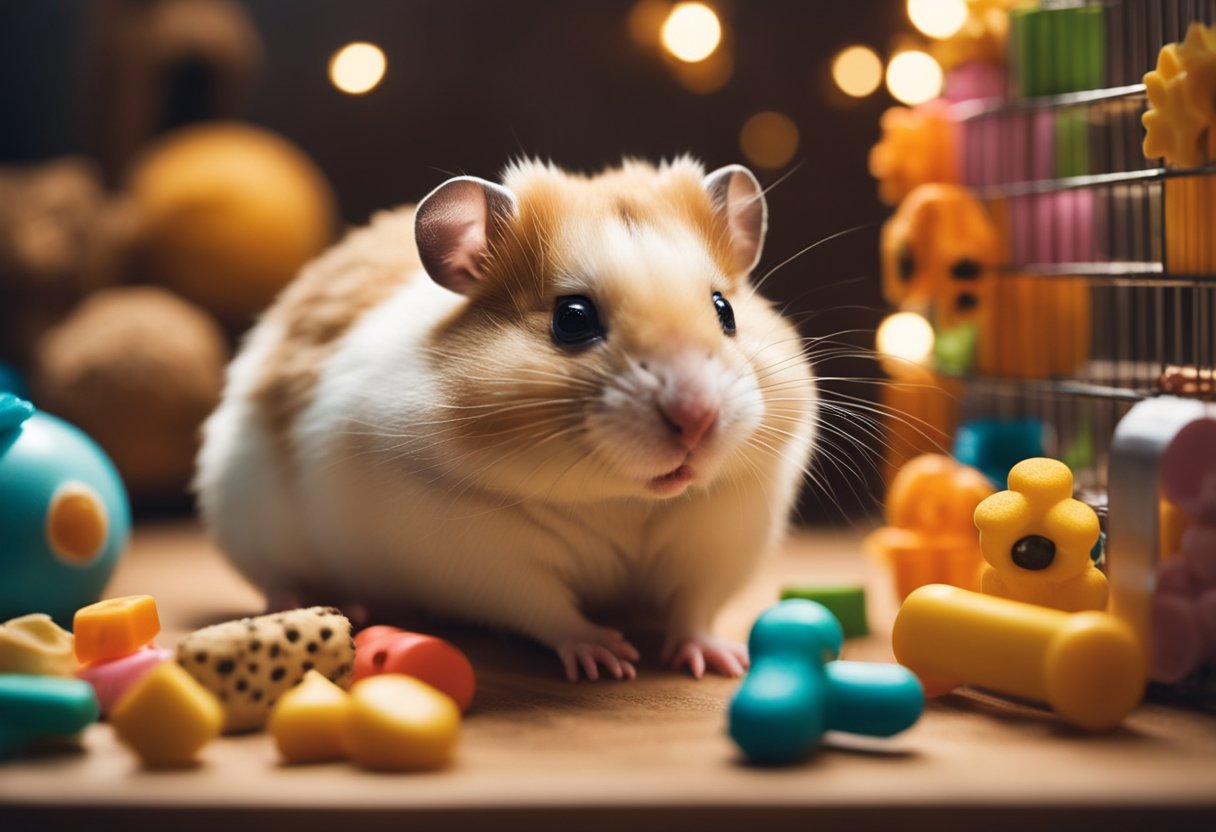
If you’re looking for more information on whether hamsters know that we love them, there are a variety of resources available online. Here are a few sources that may be helpful:
- The Pet Savvy: This website has an article titled “11 Signs That Your Hamster Loves You” that outlines some behaviors to look for in your hamster that may indicate they have a positive relationship with you. These include things like chirping, grooming, and seeking attention.
- Petshun: Another resource worth checking out is “Does My Hamster Know I Love Him? Understanding Your Pet’s Emotional Needs” by Petshun. This article provides some useful tips on how to show your hamster affection and build a strong bond with them.
- FluffyPlanet: FluffyPlanet has an article titled “Do Hamsters Feel Love? And Do Hamsters Like Affection?” that explores the topic of hamster emotions in more depth. While the article notes that hamsters may not experience love in the same way that humans do, it does suggest that they are capable of forming strong bonds with their owners.
- Hamsteropedia: Finally, “How To Tell if Your Hamster Likes You? 7 Signs of Affection” by Hamsteropedia is another helpful resource for those interested in learning more about hamster behavior. This article outlines some specific behaviors to look for in your hamster that may indicate they have a positive relationship with you.
By exploring these resources, you can gain a better understanding of how hamsters behave and what they may be thinking and feeling. Remember, every hamster is unique, so it’s important to pay attention to your own pet’s behavior and adjust your interactions with them accordingly.
Conclusion
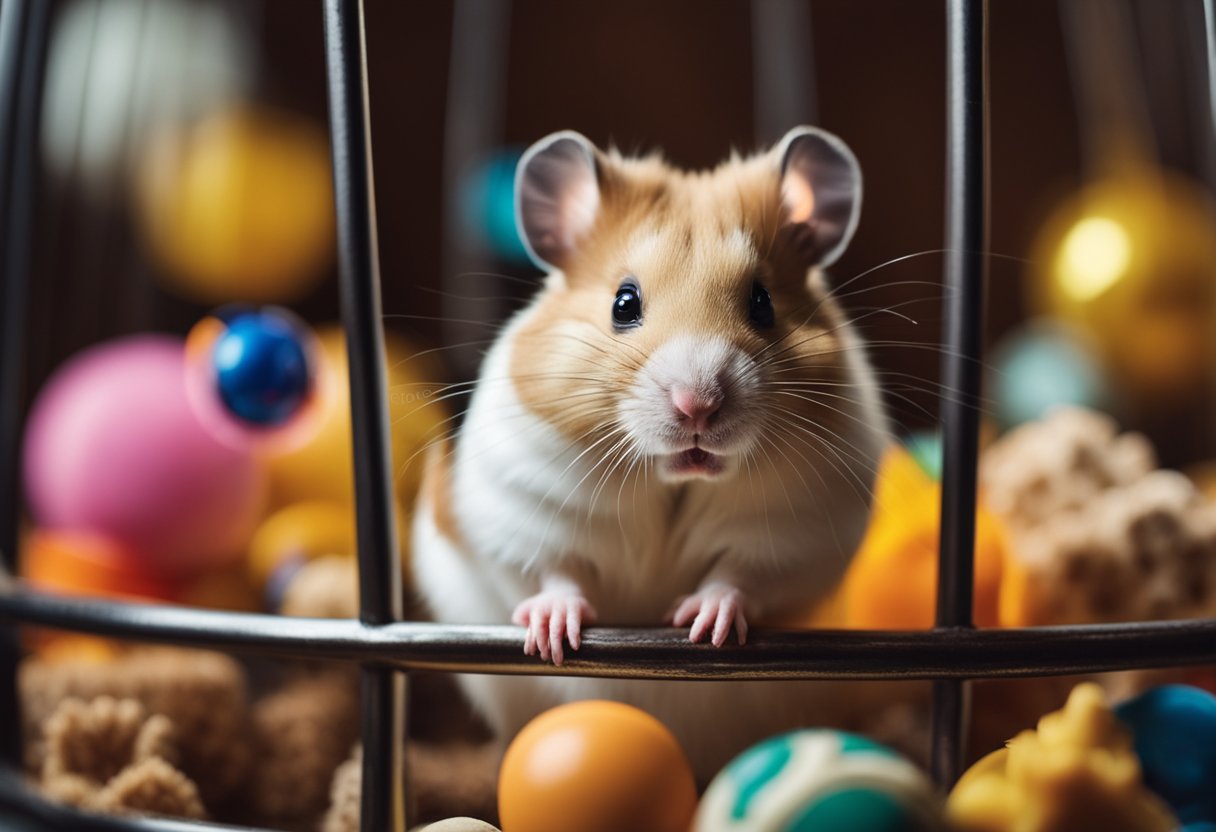
In conclusion, hamsters are cute and lovable pets that can form strong bonds with their owners. While it is not entirely clear whether hamsters can understand the concept of love, there are several behaviors and actions you can do to show your hamster that you care about them.
Firstly, it is important to spend quality time with your hamster and handle them gently. This will help them feel safe and secure around you. Additionally, offering tasty treats and providing a comfortable and stimulating environment can help your hamster feel happy and content.
It is also important to be observant and responsive to your hamster’s needs. This means providing them with fresh food and water daily, cleaning their cage regularly, and taking them to the vet if they show any signs of illness or distress.
While hamsters may not be able to express their emotions in the same way that humans do, they are still capable of feeling happy, relaxed, and excited. By taking good care of your hamster and showing them love and affection, you can help them lead a happy and healthy life.
Frequently Asked Questions
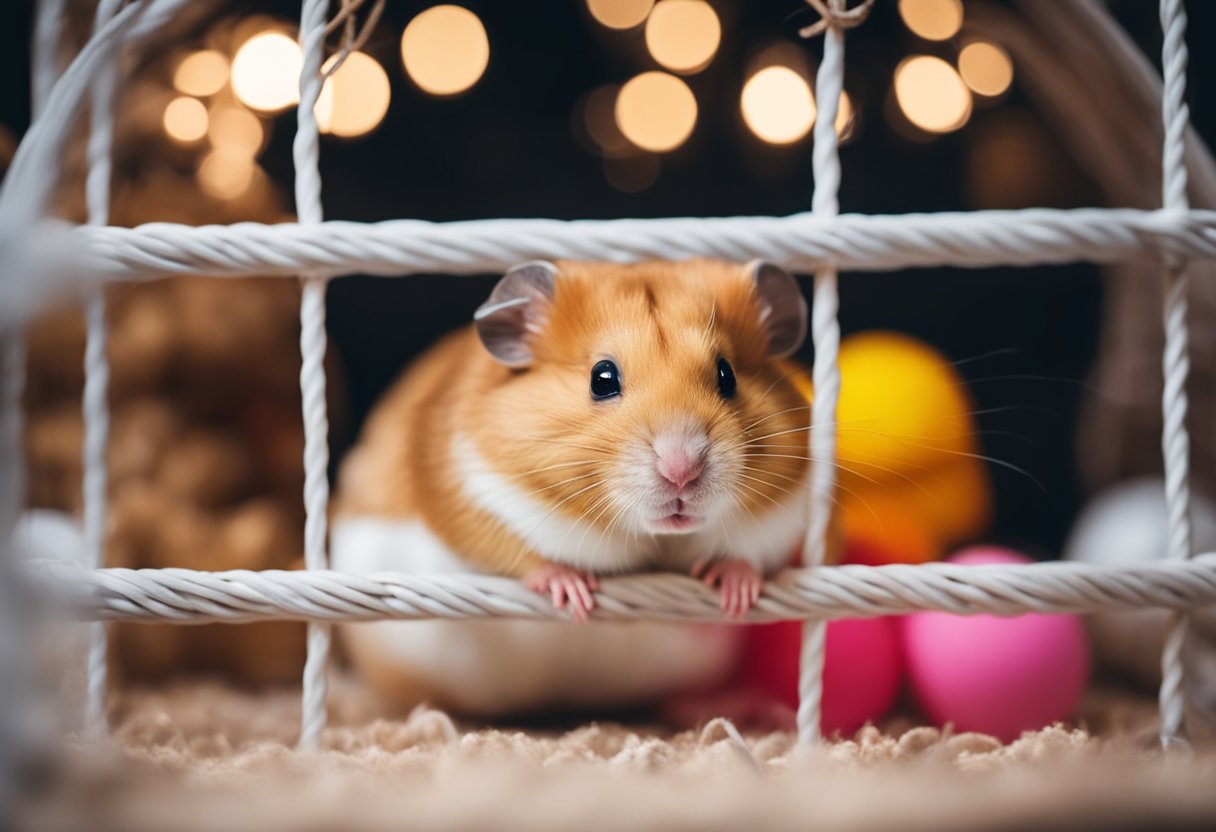
How do hamsters show affection to humans?
Hamsters show affection to humans in various ways. They may cuddle up to you, lick your hand, or even climb onto your shoulder. They may also follow you around, nibble on your fingers, or even playfully nip at your toes. If your hamster is comfortable around you, they may even fall asleep on your lap.
Do hamsters have feelings for their owners?
While hamsters may not have the same emotional capacity as humans, they are capable of forming bonds with their owners. They can recognize their owners and show affection towards them. It’s important to remember that hamsters are prey animals, so they may not always feel comfortable showing their emotions.
Do hamsters recognize their owners’ voices?
Yes, hamsters can recognize their owners’ voices. They have a keen sense of hearing and can distinguish between different sounds. They may even come running to the sound of your voice.
Can hamsters understand when humans show them affection?
Hamsters may not understand human emotions in the same way we do, but they can recognize when humans are showing them affection. Spending quality time with your hamster and providing them with a comfortable living environment can help them feel loved and cared for.
Do hamsters get attached to their owners?
Hamsters can form strong bonds with their owners and become attached to them. They may even become distressed when their owners are not around. It’s important to remember that hamsters are social animals and require social interaction to thrive.
Can hamsters feel love for humans?
While it’s difficult to say whether hamsters can feel love in the same way humans do, they are capable of forming strong attachments to their owners. They may show affection towards their owners and enjoy spending time with them. As with any pet, it’s important to provide your hamster with love, care, and attention to help them feel happy and content.
